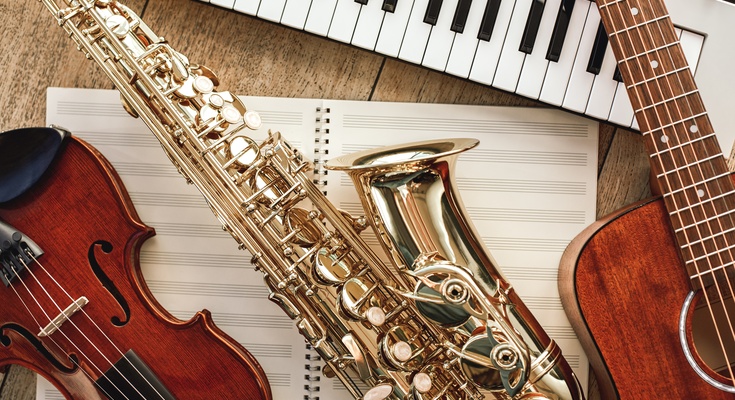Metals play a crucial role in crafting musical instruments, impacting both the sound and durability of each piece. Different metals contribute to unique tonal qualities and structural benefits, making them indispensable to musicians and manufacturers. Whether you’re a seasoned musician or simply curious, understanding the materials behind your favorite instruments offers a new appreciation for their design and sound.
Brass
Brass is an ideal metal for manufacturing instruments due to its excellent acoustic properties. This copper and zinc alloy produces warm, rich tones, making it the top choice for instruments such as trumpets, trombones, and saxophones.
Its malleability allows artisans to craft intricate shapes while the durable finish withstands the demands of live performances. Instruments made of brass often produce a resonant sound that projects well across concert and marching band settings, giving them their iconic presence in various genres.
Steel
When it comes to stringed and percussion instruments, few materials compare to the strength and versatility of steel. Guitar strings, often crafted from stainless or high-carbon steel, offer crisp tones and a long-lasting lifespan. Piano construction heavily relies on steel for its strings, which form the backbone of its striking and resonant sound.
Even percussion instruments like cymbals and snares incorporate steel for their sharp and vibrant tones. This metal’s durability makes it a reliable choice for pieces that handle the physical demands of dynamic performances.
Copper
Copper contributes to the warmth and depth of sound in various instruments, particularly those requiring excellent resonance. Violin and cello strings frequently feature copper windings to enhance low tones and add richness to their timbre.
Bells, often made partially from copper alloys like bronze, produce clear tones that carry over long distances. Some specialty wind instruments also integrate copper elements to refine their acoustics and create a mellow sound not achievable with other materials.
Aluminum
Aluminum’s lightweight nature makes it a popular option for specific instrument parts. Flutes and other wind instruments incorporate aluminum to reduce weight, making them easier to handle without compromising on performance.
Drum hardware and stands often feature this metal, ensuring greater portability for musicians constantly on the move. Its high corrosion resistance also maintains the integrity of these components, making it an increasingly common choice in modern instrument crafting.
Exploring Other Metals
Beyond brass, steel, copper, and aluminum, other metals and alloys find niche applications in instrument making. Nickel silver contributes to the lightweight and polished finish of flutes and clarinets, delivering excellent durability and tone. Gold plating enhances the aesthetics and sound of high-end brass instruments, adding a distinct tonal quality prized by professionals.
Titanium appears in custom guitar parts and drumsticks, offering extraordinary strength without adding significant weight. These materials provide unique properties that enhance an instrument’s versatility, catering to the diverse needs of musicians worldwide.
The choice of metal influences every aspect of a musical instrument, from sound quality to long-term durability. Each material brings its character to the music we enjoy. Start exploring metal-crafted instruments and learn how each piece contributes to the artistry of sound. Consider which suits your playstyle, and take the next step in finding the perfect instrument to complement your passion for music.



